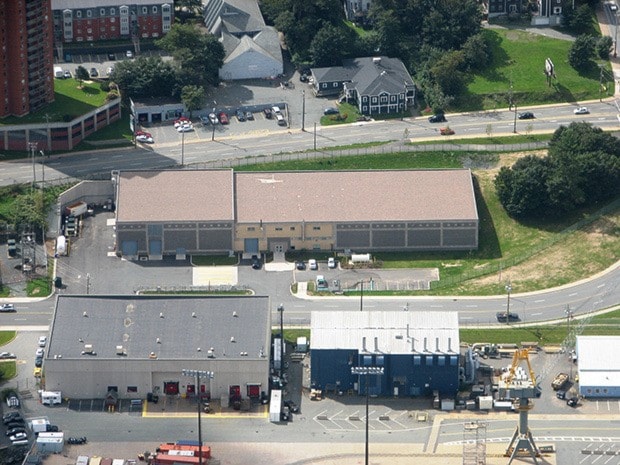Walking along Halifax's inner harbour in the 1960s began to turn into an unpleasant experience. For decades, the city had been pumping raw sewage B��Ԫ������ַ� consisting of fecal matter, tampons, condoms and anything else flushed down the toilet B��Ԫ������ַ� into the harbour, and it was starting to take a toll.
The water in the harbour turned murky, prohibiting the harvesting of shellfish and swimming at popular beaches due to health concerns. There was also a pungent smell lingering in the air as brown sludge burbled to the surface of the water.
 B��Ԫ������ַ�It was kind of disgraceful,B��Ԫ������ַ� said James Campbell, public relations coordinator with Halifax Water. B��Ԫ������ַ�There would be lots of floatables and the associated odours.B��Ԫ������ַ�
B��Ԫ������ַ�It was kind of disgraceful,B��Ԫ������ַ� said James Campbell, public relations coordinator with Halifax Water. B��Ԫ������ַ�There would be lots of floatables and the associated odours.B��Ԫ������ַ�
The pressure began mounting on city officials to clean up the harbour and do something about sewage treatment. Two plants were built at Bedford and the Eastern Passage, but the city outgrew the facilities and the vast majority of sewage continued to enter the harbour untreated.
It wasn't until 2001 that the city decided on a phased-in approach that would involve three wastewater treatment facilities B��Ԫ������ַ� the largest near downtown Halifax, a second near a neighbourhood in Dartmouth and the third in the village of Herring Cove B��Ԫ������ַ� that would serve a population of 415,000 people.
A new biosolids processing facility (to manufacture a fertilizer/soil amendment product) and associated sewage treatment plant would also be constructed near the international airport. The cost of the three advanced primary treatment plants was pegged at $333 million. Now came the question of how to pay for the costliest infrastructure project in Atlantic Canada.
B��Ԫ������ַ�The Halifax Regional Municipality got sick of trying to get the one third, one third, one third funding model,B��Ԫ������ַ� said Campbell, noting council pushed ahead with the project (at the request of the public).
The final deal saw the federal government kick in $60 million, the province $30 million, leaving the city on the hook for the remaining $243 million. The municipality borrowed some of the money and raised more through an environmental protection levy on resident's water bills.
B��Ԫ������ַ�There was overwhelming public support for getting the project done. People had heard decades of indecision about how to get moving on the project and it's always funding that's the biggest problem.B��Ԫ������ַ�
It seemed everything was finally on track, but two years later the project hit another roadblock when the city terminated its contract with the company it hired, putting more pressure on city staff to move the project ahead. A year later, however, things were back on track when another company was hired to design and build the sewage collection system.
Facility opens $3 million under budget
The shovels hit the ground in 2005 and the Halifax Wastewater Treatment Facility (WWTF) officially opened in February 2008 at a cost of $330 million B��Ԫ������ַ� $3 million under budget.
A few days after the plant opened, the murky waters started to clear, providing a pleasant walk along the harbour again. The public was astonished to see the bottom of the ocean floor, noted Campbell, and a diving salvage company was hired to retrieve some of the garbage that had been hidden until now. Two public beaches that had been closed for decades also opened for swimming.
When Campbell looks back at the project's lengthy history, getting the funds was one part of the story, where to put it and how it should look was another.
A number of solutions had been tossed around throughout the years, including one giant plant on an island in the middle of the harbour, but ultimately engineers decided the best option was to have three separate facilities as opposed to one large one.
According to Campbell, the decision to go with three facilities wasn't nearly as difficult as dispelling the myths to the public that having a sewage treatment plant in their backyard wasn't a bad thing. The city received much push back during public consultations and meetings with various community groups, but eventually citizens got on board.
B��Ԫ������ַ�We worked with the community on the exterior facade of the facilities so they had some input on that. It was really trying to break that concern you're not going to have a big, smelly industrial facility in your backyard or blocking your view of the harbour,B��Ԫ������ַ� said Campbell.
B��Ԫ������ַ�The biggest facility is in the middle of downtown Halifax and there's no smell whatsoever, no noise, no smoke stacks. There is another directly across the harbour that's also close to a residential area in the same situation.B��Ԫ������ַ�
More than a year after opening the new facility in downtown Halifax, the plant flooded, submerging electrical systems under wastepaper and leaving it inoperable. Raw sewage flowed freely into the harbour yet again until the plant was returned to full operation in June 2010.
Four years later, officials announced the Halifax wastewater treatment facility would undergo a $21 million overhaul to bring the facility in line with new federal effluent regulations.
Share your thoughts
Get the dialogue going. Send your opinions on this series to don.descoteau@blackpress.ca or call 250-478-9552 ext 224. You can also post comments to the Facebook or Twitter pages of your Black Press community newspaper. Please include your name and a telephone number for verification.
[]



